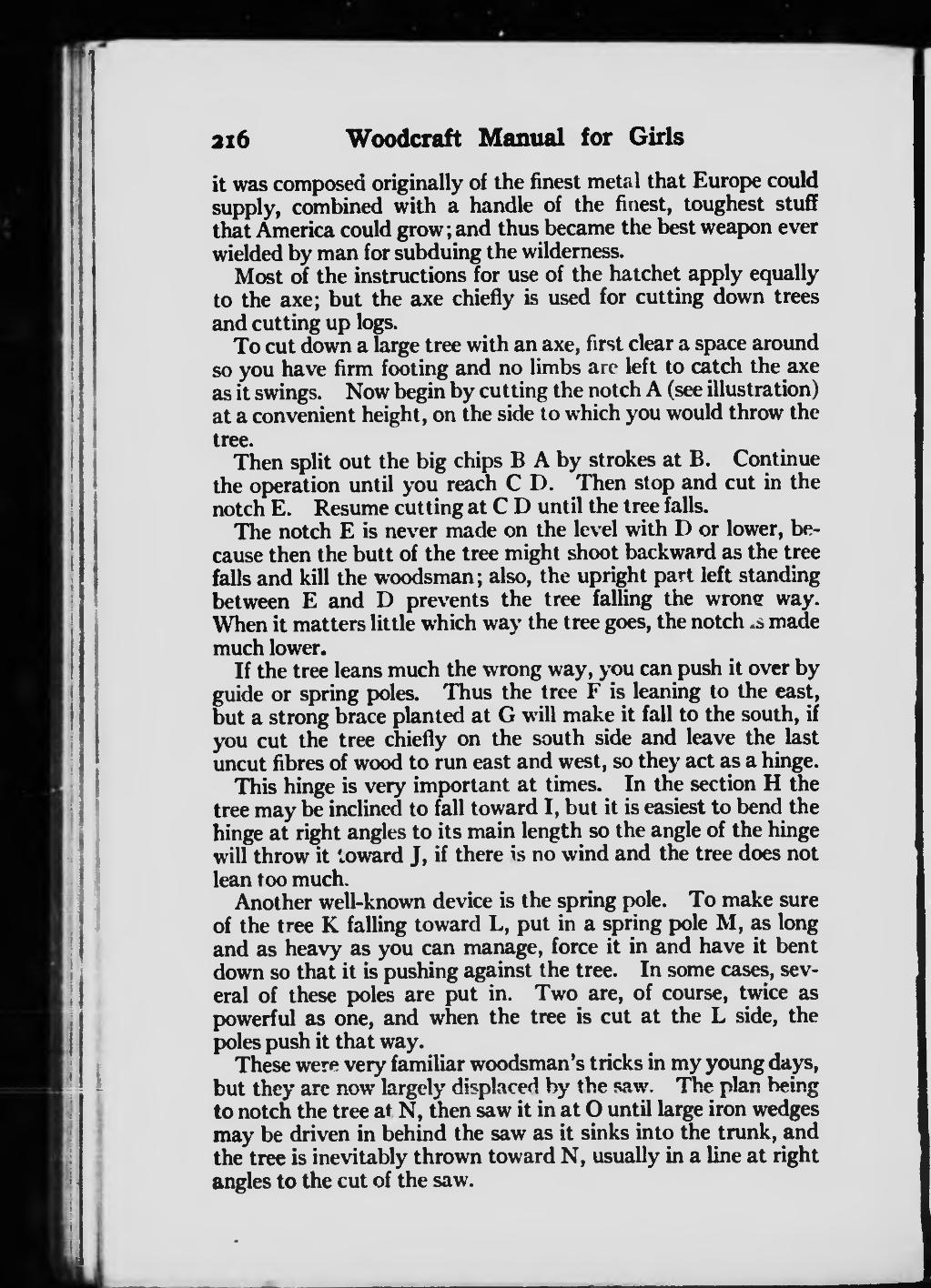az6 Woodcraft Manual for Girls it was composed originally of the finest metal that Europe could supply, combined with a handle of the finest, toughest stuff that America could grow ; and thus became the best weapon ever wielded by man for subduing the wilderness. Most of the instructions for use of the hatchet apply equally to the axe; but the axe chiefly is used for cutting down trees and cutting up logs. To cut down a large tree with an axe, first clear a space around so you have firm footing and no limbs are left to catch the axe as it swings. Now begin by cutting the notch A (see illustration) at a convenient height, on the side to which you would throw the tree. Then split out the big chips B A by strokes at B. Continue the operation until you reach C D. Then stop and cut in the notch E. Resume cutting at C D until the tree falls. The notch E is never made on the level with D or lower, be- cause then the butt of the tree might shoot backward as the tree falls and kill the woodsman; also, the upright part left standing between E and D prevents the tree faUing the wrong way. When it matters little which way the tree goes, the notch iS made much lower. If the tree leans much the wrong way, you can push it over by guide or spring poles. Thus the tree F is leaning to the east, but a strong brace planted at G will make it fall to the south, if you cut the tree chiefly on the south side and leave the last uncut fibres of wood to nm east and west, so they act as a hinge. This hinge is very important at times. In the section H the tree may be inclined to fall toward I, but it is easiest to bend the hinge at right angles to its main length so the angle of the hmge will throw it toward J, if there is no wind and the tree does not lean too much. Another well-known device is the spring pole. To make sure of the tree K falling toward L, put in a spring pole M, as long and as heavy as you can manage, force it in and have it bent down so that it is pushing against the tree. In some cases, sev- eral of these poles are put in. Two are, of course, twice as powerful as one, and wnen the tree is cut at the L ade, the poles push it that way. These were very familiar woodsman's tricks in my young days, but they are now largely displaced by the saw. The plan being to notch the tree at N, then saw it in at O until large iron wedges may be driven in behind the saw as it sinks into the trunk, and the tree is mevitably thrown toward N, usually in a line at rij^t angks to the cut of the saw.
Stránka:roll 1916.djvu/240
Z thewoodcraft.org
Tato stránka nebyla zkontrolována
